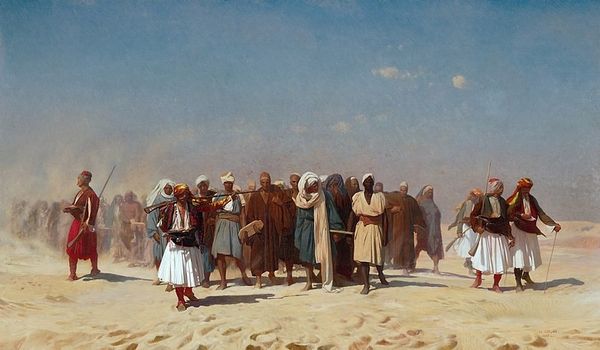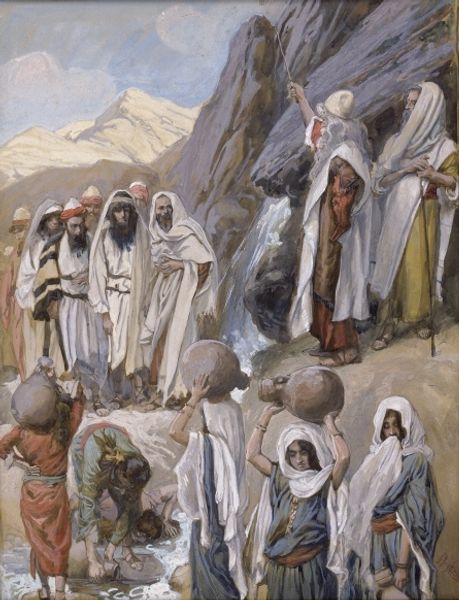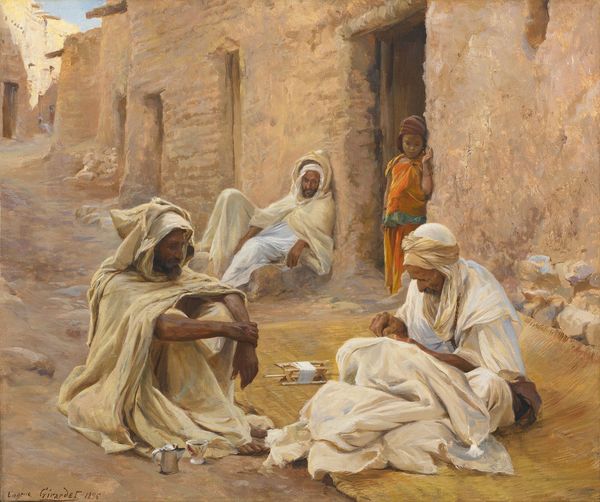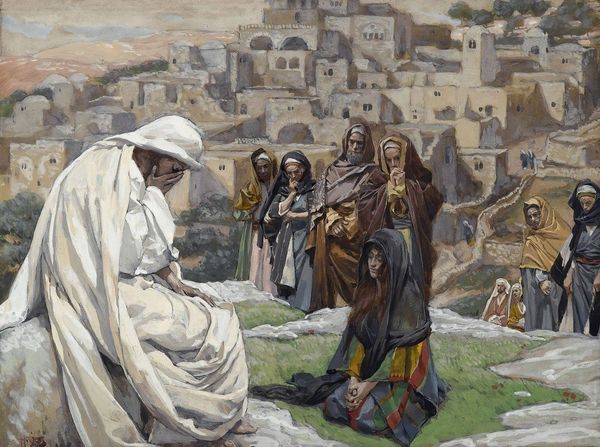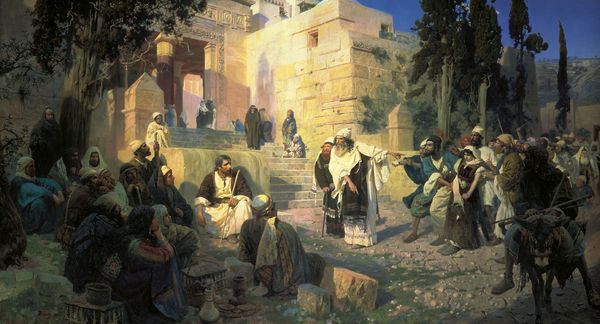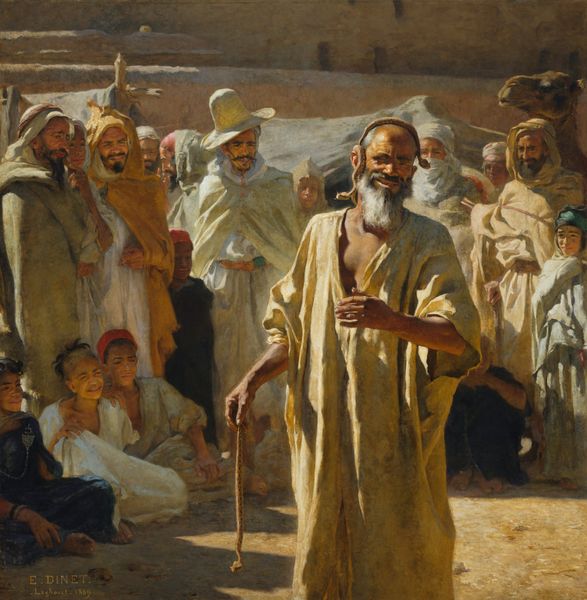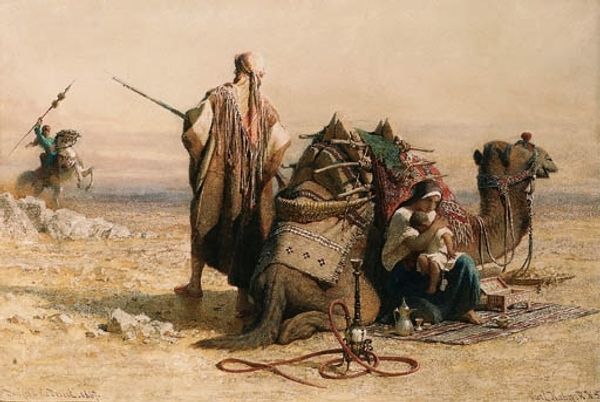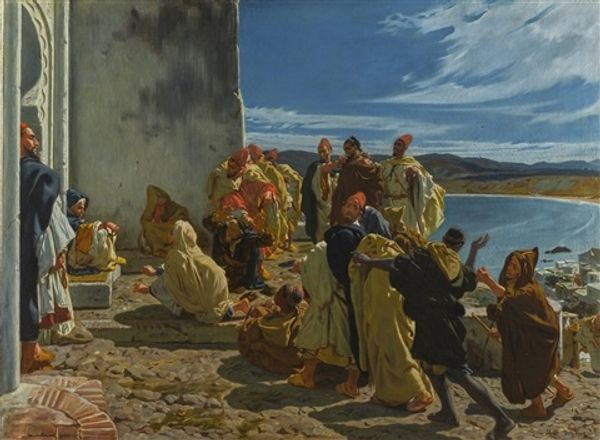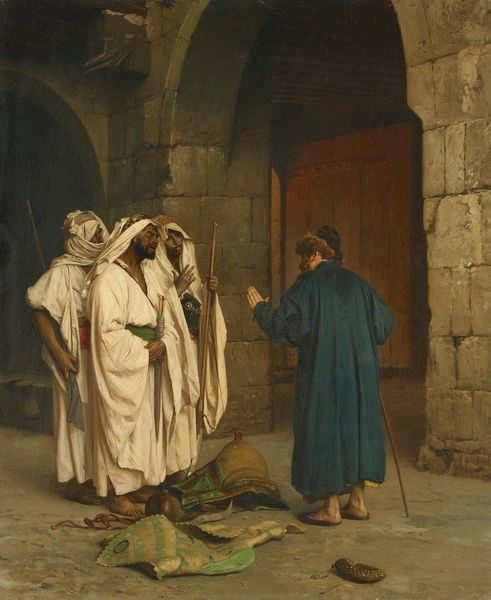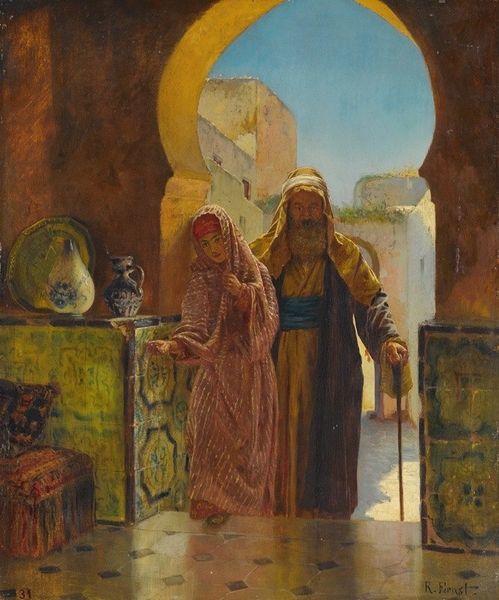
painting, plein-air, oil-paint
#
painting
#
plein-air
#
oil-paint
#
landscape
#
oil painting
#
group-portraits
#
islamic-art
#
genre-painting
#
realism
Copyright: Public domain
Eugène Girardet created this painting of 'The Pray at Bou-saada, Algeria'. The painting's light palette lends a sense of expansiveness, structured around the stark architectural lines that intersect with the flowing robes of the praying figures. Girardet uses a geometric composition with horizontal and vertical lines. This structure divides the painting into distinct planes. The subjects, arranged in a semi-circle, draw the viewer's eye across the canvas, engaging with the architectural setting to convey the cultural and spiritual significance of the scene. The painting functions as a sign, speaking to a Western audience. It carries coded messages about the East and its religious practices. The arrangement of figures in the composition, the use of colour and light, are all elements within a system that construct meaning. It can be decoded through an understanding of Orientalist art. The interplay between form and content invites us to explore how art not only captures a moment but also communicates values. It reflects the artist's and the viewer's cultural understanding.
Comments
No comments
Be the first to comment and join the conversation on the ultimate creative platform.
